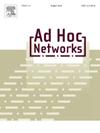Optimized detection of cyber-attacks on IoT networks via hybrid deep learning models
IF 4.4
3区 计算机科学
Q1 COMPUTER SCIENCE, INFORMATION SYSTEMS
引用次数: 0
Abstract
The rapid expansion of Internet of Things (IoT) devices has significantly increased the potential for cyber-attacks, making effective detection methods crucial for securing IoT networks. This paper presents a novel approach for detecting cyber-attacks in IoT environments by combining Self-Organizing Maps (SOMs), Deep Belief Networks (DBNs), and Autoencoders. These techniques are employed to create a system capable of identifying both known and previously unseen attack patterns. A comprehensive experimental framework is established to evaluate the methodology using both simulated and real-world traffic data. The models are fine-tuned using Particle Swarm Optimization (PSO) to achieve optimal performance. The system’s effectiveness is assessed using standard cybersecurity metrics, with results showing an accuracy of up to 99.99% and Matthews Correlation Coefficient (MCC) values exceeding 99.50%. Experiments conducted on three well-established datasets NSL-KDD, UNSW-NB15, and CICIoT2023 demonstrate the model’s strong performance in detecting various attack types. These findings suggest that the proposed approach can significantly enhance the security of IoT systems by accurately identifying emerging threats and adapting to evolving attack strategies.
求助全文
约1分钟内获得全文
求助全文
来源期刊

Ad Hoc Networks
工程技术-电信学
CiteScore
10.20
自引率
4.20%
发文量
131
审稿时长
4.8 months
期刊介绍:
The Ad Hoc Networks is an international and archival journal providing a publication vehicle for complete coverage of all topics of interest to those involved in ad hoc and sensor networking areas. The Ad Hoc Networks considers original, high quality and unpublished contributions addressing all aspects of ad hoc and sensor networks. Specific areas of interest include, but are not limited to:
Mobile and Wireless Ad Hoc Networks
Sensor Networks
Wireless Local and Personal Area Networks
Home Networks
Ad Hoc Networks of Autonomous Intelligent Systems
Novel Architectures for Ad Hoc and Sensor Networks
Self-organizing Network Architectures and Protocols
Transport Layer Protocols
Routing protocols (unicast, multicast, geocast, etc.)
Media Access Control Techniques
Error Control Schemes
Power-Aware, Low-Power and Energy-Efficient Designs
Synchronization and Scheduling Issues
Mobility Management
Mobility-Tolerant Communication Protocols
Location Tracking and Location-based Services
Resource and Information Management
Security and Fault-Tolerance Issues
Hardware and Software Platforms, Systems, and Testbeds
Experimental and Prototype Results
Quality-of-Service Issues
Cross-Layer Interactions
Scalability Issues
Performance Analysis and Simulation of Protocols.
 求助内容:
求助内容: 应助结果提醒方式:
应助结果提醒方式:


